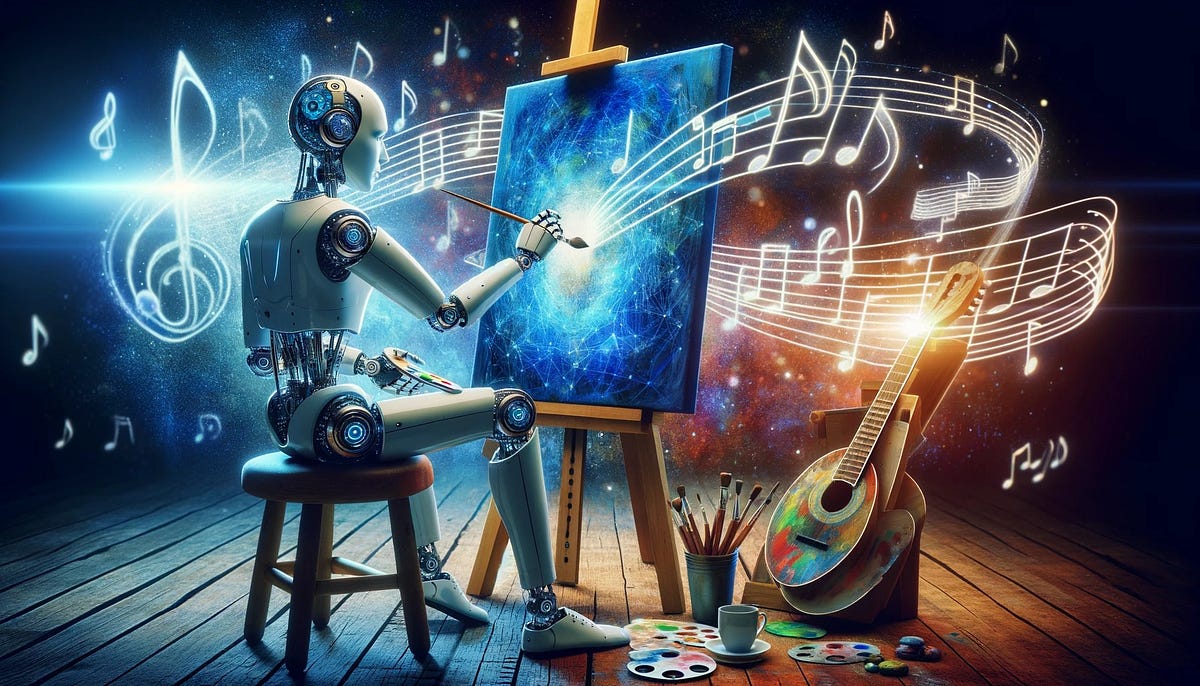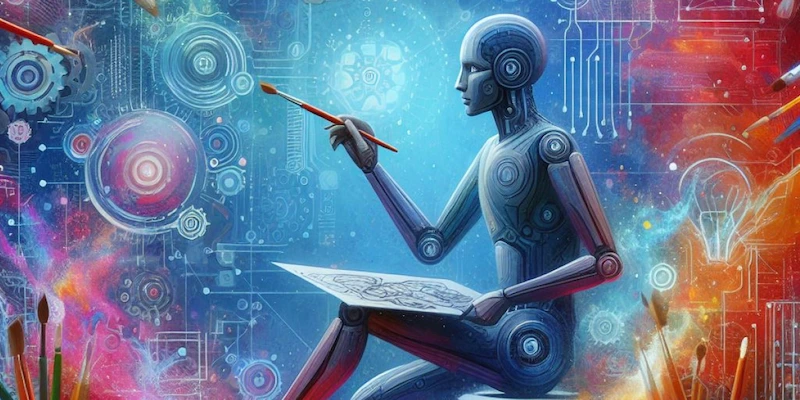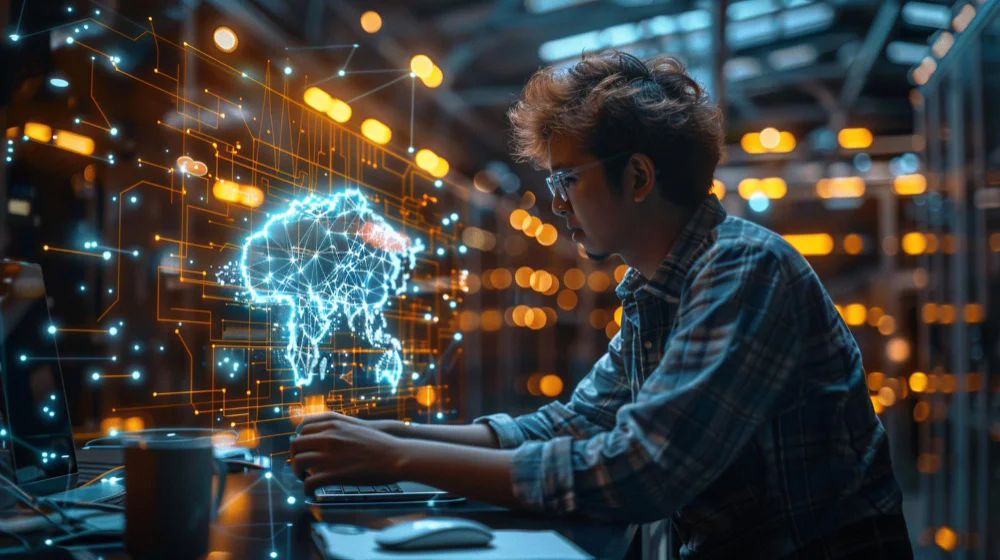AI is at the center of the rapid changes occurring in the creative world. With GPT-5.5, a new era of storytelling, visual design, music composition, and more will be ushered in by computers that actively influence our work. But is this the start of a crisis of creative identity or the start of a creative renaissance?
Join Metti IRA as we explore how Generative AI is transforming creativity—and what it means for the future of human expression.
What Is GPT-5.5? A Glimpse Into The Future Of Language Models

AI’s development has been nothing short of amazing. After GPT-3’s remarkable text generation and GPT-4’s more sophisticated reasoning skills, we’ve now reached the period of GPT-5.5, a model that strikes a balance between accuracy and power.
GPT-5.5 brings significant improvements, including improved hallucination control, real-time content generation, and multimodal (text, image, and speech) capabilities. Writing is no longer the only thing involved; tone, emotion, context, and media must all be understood.
Real-time video scripts, songwriting, game creation, and novel writing are all powered by GPT-5.5 in the creative industry. It behaves more like a co-creator than a tool.
The Rise Of Generative AI In Creative Fields
The new generation of creativity is being fueled by AI, from independent artists to corporate agencies.

AI In Content Creation
Writers use GPT-5.5 to spark story ideas. Musicians remix AI-generated loops. Designers combine prompts with diffusion models to prototype visual assets. Even YouTubers use AI to draft scripts and thumbnails.
GPT-5.5’s Role In Human-AI Co-Creation
It’s not about replacing humans—it’s about augmenting imagination. GPT-5.5 helps creators go from concept to draft in minutes, enabling more iteration and less burnout.
Case Studies
- An full album including AI-generated melodies was co-composed with a music label.
- A marketing company used GPT-5.5 to create social media tales that went viral.
- GPT suggestions let independent filmmakers create scenes and conversation more quickly.
How GPT-5.5 Enhances And Challenges Human Creativity
GPT-5.5 is changing the way we generate, think about, and communicate ideas. It presents intriguing opportunities for invention, but it also poses significant queries about what exactly constitutes human creativity.

Enhancing Idea Generation And Speed
The GPT-5.5 can generate hundreds of ideas in a matter of seconds. Blocks are overcome by writers. Designers get ideas. Without taking the place of creative workflows, it speeds them up.
Emotional Range And Narrative Structure
GPT-5.5 comprehends dramatic arcs and emotional tone, in contrast to previous models. It can thus balance character voice, conflict, and resolution, making it a useful co-author in narrative.
Risks Of Homogenization And Story Similarity
Over-reliance on GPT-5.5 might lead to content that lacks originality or feels too similar, despite its advantages. Models have the potential to reuse well-known tropes since they learn from the data that is already available.
GPT-5.5 vs Human Creativity: What’s Still Unique To Us?
Emotion, cultural nuances, and lived experience are the foundations of human creativity. These characteristics are mimicked by GPT-5.5, however it lacks emotion and reflection on meaning. Human understanding is still necessary for true creativity.
Ownership, Ethics, And Originality In The AI Creative Economy
Questions about authorship, originality, and ethics are more important than ever as AI-generated work becomes more widely used. In an algorithm-driven world, creators, businesses, and regulators must now reinterpret what ownership means.

Who Owns AI-Generated Content?
The ownership of AI content is still up for debate. Copyright protection is not available for content produced exclusively by AI in many places. Creators who want to assert their rights must explicitly describe their function.
Profits, Copyright, and Attribution Challenges
When AI contributes to a work, how are profits shared? Who is credited? As collaborative creation increases, legal frameworks need updating to reflect shared authorship.
Bias, Deepfakes, and Ethical Considerations
GPT-5.5 has the potential to inadvertently perpetuate prejudices or be abused to produce damaging content, such as deepfakes. To stop abuse, model safeguards and ethical use policies are essential.
Key Trends Defining The Future Of Generative AI
With new capabilities and difficulties appearing daily, generative AI is developing quickly. In this rapidly changing environment, being aware of the major trends helps businesses and artists stay ahead of the curve.

Multimodal Capabilities And Real-Time Output
GPT-5.5 is more than just a text test. It may produce in real time in a variety of media, such as answering queries, narrating podcasts, or producing artwork in response to written instructions.
Domain-Specific Models vs General Models
Although GPT-5.5 is a generalist, there is an increasing need for specialized models that perform better than general models in particular fields, such as legal writing, medical content, or fashion design.
AI-as-a-Service for Creatives and Businesses
Platforms are integrating GPT-5.5 to provide plug-and-play creative solutions, such as pitch deck builders and ad generators. This makes high-quality content creation more accessible to all.
Regulation, Security, and Hallucination Control
The focus on regulation is growing along with generative AI. Better fact-checking capabilities and transparency tools are included in GPT-5.5 to lessen false information and detrimental results.
GPT-5.5 And The Creative Workforce: Disruption Or Transformation?

Although some people worry about losing their jobs, job transformation is more likely. Repetitive jobs are handled by GPT-5.5, allowing humans to concentrate on strategy, creativity, and emotion-driven production.
The positions of “Prompt Engineer” and “AI-Creative Director” are becoming more popular. Instead of competing, writers, marketers, and artists are learning to co-create. The future’s talent? being capable of working with AI.
Real-World Applications Of GPT-5.5 In Creative Industries
- Marketing campaigns: AI generates personalized copy, headlines, and ad variations
- Scriptwriting: GPT-5.5 assists in developing character arcs and dialogue
- Design and branding: Naming, slogan creation, and style guide generation
- Education: AI writes lesson plans, creative assignments, and interactive stories for learners
These applications reduce cost, save time, and expand what’s creatively possible.
How To Navigate The Future: Strategies For Creators And Brands

- Embrace co-creation: Let GPT-5.5 handle drafts or edits while humans refine tone and vision
- Establish ethical content policies: Set boundaries on data use, originality, and AI attribution
- Choose the right tools: Whether it’s GPT-5.5, DALL-E, or diffusion models, align tools with your goals
Education, experimentation, and open dialogue are keys to creative success in an AI-enhanced world.
Conclusion: Is GPT-5.5 A Threat Or An Ally To Human Creativity?
GPT-5.5 is designed to enhance creators rather than to replace them. It increases access to creativity, expedites experimentation, and opens up new avenues for expression.
We must, however, make sure AI is used as a tool rather than a crutch. The future of creativity appears to be a powerful collaboration rather than a competition, as human emotion and machine efficiency are combined.

